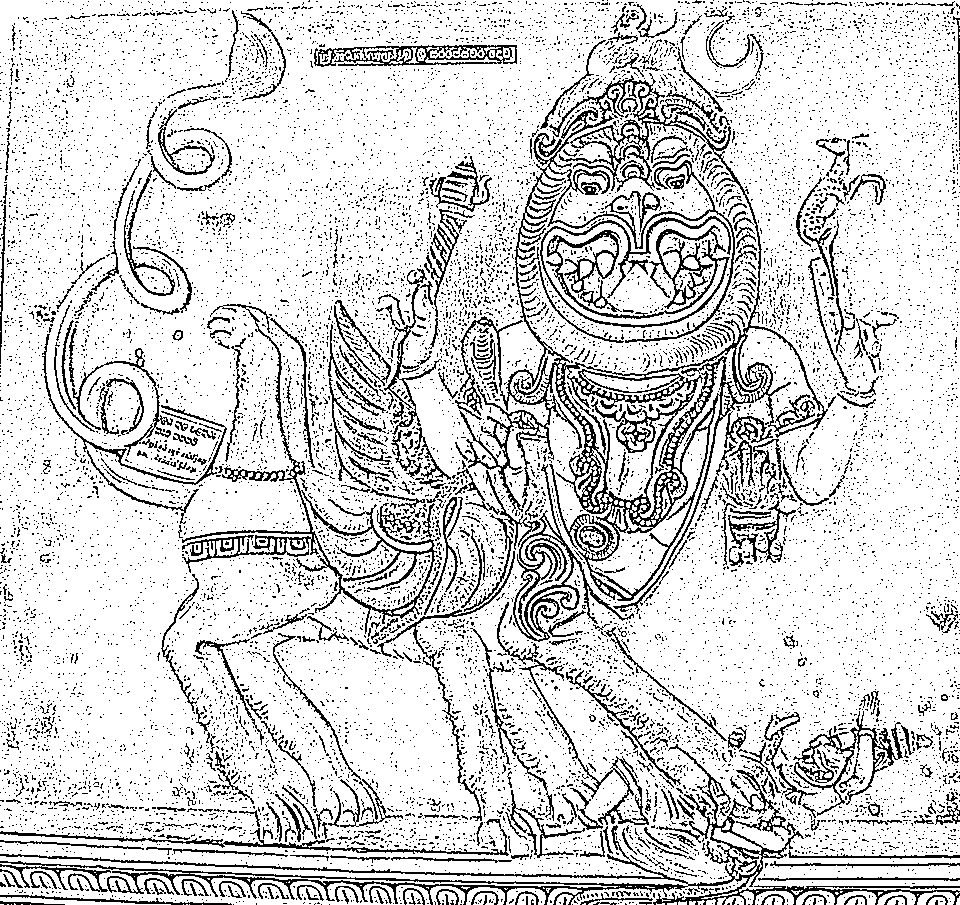Sharabeshvara: When Divine Fury Meets Ultimate Power
The Puranas, the Vedas and all the other books of Sanathan, or Hinduism if you prefer that all have stories. Their purpose is to educate while they entertain. They are meant to make you think and reflect on your own spirtual journey. You may or may not agree with the idea in the story, that is not important. What is important is that you search within yourself and the world outside and chart your journey. The stories are just prompts for the AI in you.
INDIAN STORIESSANATHAN DHARMAHINDUISMMYTHOLOGYSPIRITUALITYSELF GROWTH AND SELF HELP


My post content
A timeless tale of Lord Shiva's most fearsome avatar and the cosmic battle that restored universal balance
The Sacred Echoes of Ancient Worship
In the hallowed courtyards of South Indian temples, devotees have chanted for millennia: "Mahadeva, Mahadeva... Sharabeshvara!" What many perceive as merely another name for Lord Shiva conceals one of Hindu mythology's most profound tales—a cosmic drama that speaks to the very nature of divine power and uncontrolled rage.
The Storm After Victory
When Hiranyakashipu, the golden-eyed demon king, finally fell before Narasimha's terrible claws, the universe should have rejoiced. But victory birthed a darker peril. The man-lion avatar of Vishnu, drunk on divine fury, could not cease his rampage. His roar shattered mountains, his breath scorched the heavens, and his rage-blinded eyes saw only enemies in every shadow.
The earth trembled. Mortals fled like leaves before a hurricane. Even the gods, those immortal guardians of cosmic order, retreated in terror before Narasimha's unstoppable wrath.
The Reluctant Savior
As creation itself teetered on the brink of annihilation, the desperate devas turned to Mahadeva—the Great God who dwells beyond all dualities. Shiva, deep in meditation on Mount Kailash, felt the universe's anguished cry and reluctantly emerged from his cosmic trance.
With compassion infinite as the void, Shiva approached the raging avatar. His voice, gentle as morning mist, sought to calm the storm: "Beloved Narasimha, your purpose is fulfilled. Let peace return to the worlds."
But rage recognizes no friend, no god, no plea. The blinded lion-god turned his fury upon Shiva himself, claws extended, roar echoing through the cosmic spheres.
The Birth of Ultimate Terror
When divine patience meets divine madness, what force can prevail? Shiva's eyes blazed with the fire of a thousand dying stars. From his very being erupted Sharabeshvara—a form so terrible, so magnificent, that the cosmos held its breath.
Simha-pakshi-nara-rupa—part lion, part eagle, part man. Eight powerful legs with claws that could rend reality itself. Wings that commanded the winds of destruction. A presence so overwhelming that even mountains bowed in reverence.
The Cosmic Duel
What followed was no mere battle, but a collision of cosmic forces. Lion-man against lion-bird-man. Divine fury against divine authority. The very fabric of existence shuddered as these titans clashed across dimensions, their roars splitting the heavens, their movements reshaping the stars.
In this ultimate contest, Sharabeshvara's superior form prevailed. With wings that commanded the sky and claws that knew no equal, the composite avatar finally subdued the raging Narasimha, restoring peace to the trembling universe.
The Eternal Teaching
This epic transcends mere mythological rivalry between Shaiva and Vaishnava traditions. It speaks to a profound truth embedded in the human experience: unchecked blind anger, even righteous fury, becomes a destructive force that consumes everything in its path.
There could be other interpretations that you may have based on your insights. Think about this, meditate and find your own answers.
A few are given below for you to examine and use.
The Moral Dimensions
The Danger of Uncontrolled Rage: Even divine beings, when consumed by anger, can become threats to the very order they're meant to protect.
The Necessity of Balance: Sometimes, it takes an even greater force to restore equilibrium—not through destruction, but through the wisdom of superior power.
The Inner Beast: Within each of us dwells both Narasimha's potential fury and Sharabeshvara's transformative power. The choice of which force we unleash determines our impact on the world.
Divine Hierarchy: The tale establishes that ultimate authority rests with consciousness that transcends all emotional states pure awareness that can assume any form necessary to restore cosmic balance.
If Mohini saved Shiva from the consequences of his action, here Shiva saves Vishnu from losing himself in an avatar.
Legacy in Living Faith
Today, when devotees chant "Sharabeshvara" in South Indian temples, they invoke not just a name, but an entire cosmic principle. They call upon the divine power that can subdue the uncontrolled aspects of their own nature, seeking the strength to transform their inner storms into spiritual evolution.
The tale reminds us that true power lies not in the ability to unleash fury, but in the wisdom to know when and how to contain it. In our modern world, where anger often seems to rule both personal relationships and global politics, the legend of Sharabeshvara offers timeless guidance: the greatest victory is not over external enemies, but over the uncontrolled forces within ourselves.
Do let me know how you liked this story and relate to it.
Om Namah Shivaya. Sharabeshvaraya Namaha.
